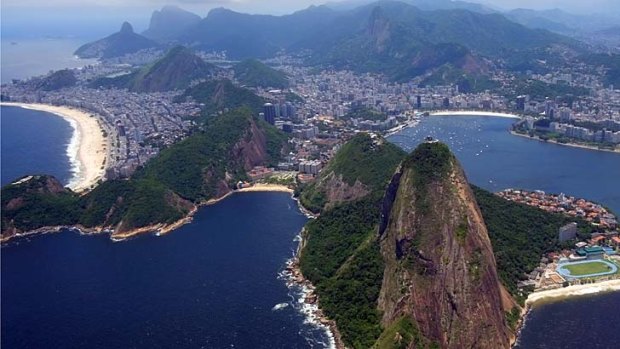
Copacabana and Sugar Loaf mountain in Rio de Janeiro, Brazil.Credit: AFP
Lance Richardson does the legwork for your guide to the planet's most compelling destinations for the new year.
Where to next? For increasingly peripatetic Australians, it can be a perplexing question, especially since the world, and the world of travel, is forever changing, seemingly by the hour. One moment a once fashionable destination, such as Syria, slams its doors shut just as another suddenly and unexpectedly flings its doors wide open, like the previously pariah nation of Burma.
Here, then, is Traveller's list of international destinations - some that are resurfacing after, or still suffering from, turbulent times and seismic shifts - for 2013 that could, or perhaps should be, on your list for next year and beyond. Plus, some of our leading travel writers nominate the destination stamps they'd love to have on their passports for next year.
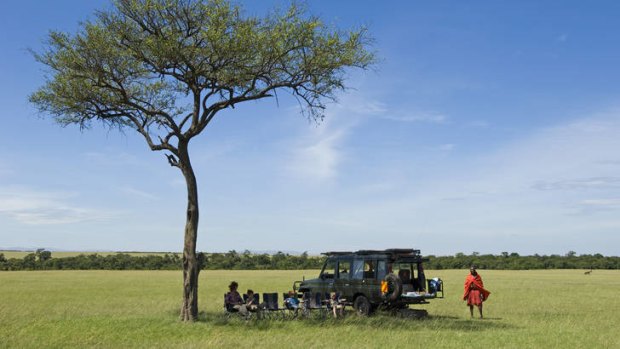
A game drive in Masai Mara, Kenya.Credit: Getty Images
Rio de Janeiro, Brazil
In some ways, this is shaping up to be the decade of South America. Visit Cusco, Peru, for an evolving mountain city of multicultural cuisine and surprisingly sophisticated hotels such as the Palacio Nazarenas (palacionazarenas.com). Head north to Ecuador, where a new train will soon connect the capital of Quito with coastal Guayaquil, part of a $US250 million rail upgrade.
But the real star of the show is Brazil, now the world's sixth-largest economy despite ripple effects from the European debt crisis. Indeed, a recent study by MasterCard points to Rio de Janeiro as the world's most up-and-coming city destination for international travellers. Perhaps this is unsurprising when you consider all Rio has to offer beneath its iconic Christ the Redeemer statue, perched on the hunchback mountain of Corcovado.
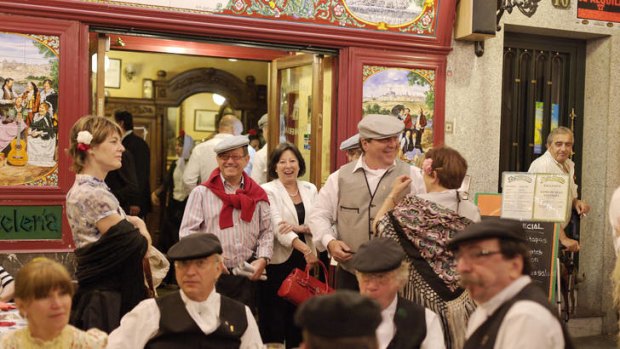
Couples dancing in Madrid.Credit: Getty Images
Guanabara Bay has been voted one of the Seven Natural Wonders of the World. Sprawling, sun-kissed beaches such as Ipanema and Copacabana are decorated with bronzed bodies and carts peddling coconut water, just steps from sophisticated shopping with a Latin twist. Certain favelas retain their reputations for violence, but a booming middle-class makes this a city undergoing radical gentrification. It also knows how to have a good time. While Rio is most famous for its raucous Carnival preceding Lent (rio-carnival.net), Cariocas, as locals call themselves, party at any time of year, particularly in the streets of Lapa.
The party is only going to get bigger, too. In 2014, Rio is slated to host the FIFA World Cup. In 2016, the Summer Olympics and Paralympics come to town - a first for South America (rio2016.com). Think of it like this: before a show opens on Broadway, there's often a preview period when tickets are cheaper and the atmosphere is more relaxed. Next year is Rio's preview period. See the spectacle before prices go up.
Burma
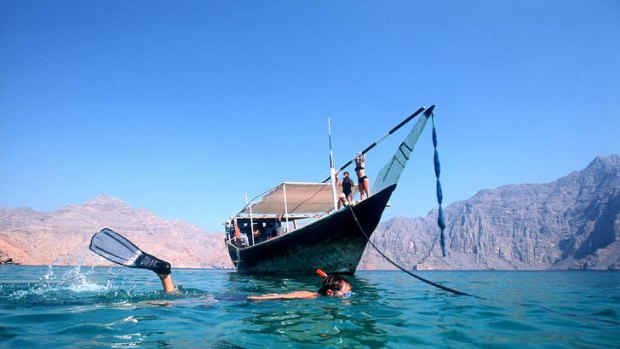
Snorkelling off Musandam Peninsula.Credit: Getty Images
Locked away for decades in self-imposed exile, Burma engaged the international community with a large promotional campaign in the early 1990s. Then journalists discovered the tourism infrastructure was being built by forced labour. "Tourists better stay at home and read some of the many human rights reports," advised the chairwoman of the National League for Democracy, Aung San Suu Kyi, from house arrest. The result was a long-running boycott.
Something remarkable has happened during the past two years, though. Burma is still ruled by a military junta, but the President, Thein Sein, has eased censorship and freed hundreds of political prisoners, including Aung San Suu Kyi, who has revised her opposition to international visitors: she now suggests travellers can help change the country for the better.
Burma is a lush landscape of Buddhist temples and golden stupas, where horse-drawn carts outnumber cars significantly. Yangon is filled with crumbling villas and betel-nut vendors. Mobile phones do not work, nor are there many ATMs. The surest news source is a tea shop. To float down the Ayeyarwady on a river steamer is to see a world that has had little exposure to the modern conveniences we take for granted.
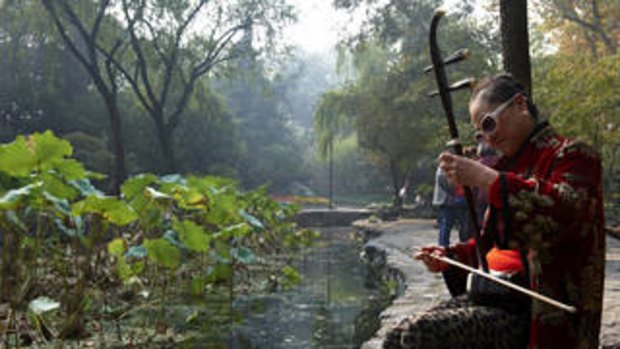
A musician in Lu Xun Park, Shanghai.Credit: Getty Images
Nevertheless, caution is advised for future visitors. During a recent visit by the US President, Barack Obama, Aung San Suu Kyi warned him not to be fooled by the pace of the country's change. "We have to be very careful that we are not lured by the mirage of success," she said. Burma is one of the world's best travel destinations at the moment: cheap, friendly and very safe. However, it pays to do some research before departure. Choose civilian vendors over companies with government connections. In Yangon, for example, skip the Strand for the Savoy Hotel (savoyhotel-yangon.com). It is still possible to oppose the regime while supporting the long-suffering Burmese, who are happy to have guests again.
Kenya
Kenya came into the world spotlight for all the wrong reasons in 2011, when Somali pirates kidnapped a French woman living at the UNESCO World Heritage town of Lamu. This was one incident in a string of attacks in the country, from Nairobi to Mombasa.
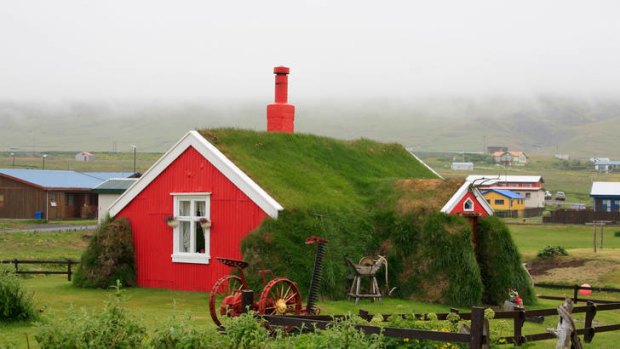
Iceland has become more accessible.Credit: Alamy
Things have improved dramatically since then. In September, the Kenya Defence Force successfully captured the Port of Kismayo in Somalia, home to the al-Shabaab militia, which was believed to be responsible for attacks. The Kenyan government also assembled a Tourism Federation Safety and Communication Centre to help visitors. While the Australian Department of Foreign Affairs advises a high degree of caution when travelling in Kenya, this is the same recommendation they offer for Bali.
Like Bali, the attractions remain as compelling as ever. Lamu, a mediaeval stone town stuffed with mangoes and donkeys, was an important stopping point on the ancient Arab trade route that ferried ivory and slaves up and down the coast of Africa. Further inland, Kenya has some of the continent's most important game reserves, from Tsavo to Samburu. The Maasai Mara welcomes an annual migration of millions of animals from the adjacent Serengeti National Park in Tanzania (maasaimara.com). The Mara landscape is filled with acacia trees and elephant herds grazing on the green savannah, all of it accessible to travellers thanks to a variety of tented camps that cover every budget.
Kenya also has important cultural history; it is the cradle of mankind, after all. Since 2008, the annual Lake Turkana Festival has celebrated 10 ethnic communities living in the dry depths of the country, with three days of cultural performances, soccer and panel discussions (laketurkanafestival.com). "The underlying main goal ... continues to be promoting peace and reconciliation," the program says. It is a goal shared by a country looking to a brighter future. See magicalkenya.com.
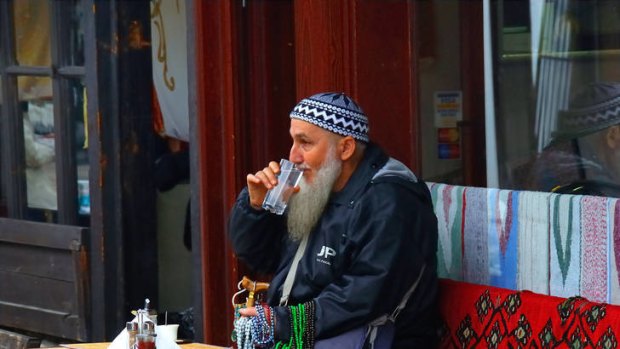
Coffee culture in Sarajevo.Credit: Alamy
Austin, US
Austin is summed up by one eccentric feature in Vince Hannemann's backyard. For 25 years, Hannemann has been amassing trash - clocks, car bumpers, circuit boards - in a multilevel installation titled The Cathedral of Junk. Hannemann lives in the middle of suburbia.
Austin is a liberal town in the middle of Republican Texas. It also takes weirdness so seriously it has become famous for it: "Keep Austin Weird" is the unofficial motto. This is a place where people gather nightly to watch 1.5 million Mexican bats emerge from under the Congress Avenue Bridge; "mom and pop" shops outnumber fast-food chains; there's live music in the supermarket; and the whole place fills with indie rockers during the South by Southwest festival (sxsw.com). Concerns have been raised about the city's future, though. "Can Austin keep itself weird?" writer Richard Parker asked in a recent article for The New York Times. He pointed to Leslie Cochran, a beloved 60-year-old man once regularly found at a street intersection wearing high heels and a leopard-print G-string: "Shortly before he died, Leslie warned that Austin risked becoming so big as to be bland."
The city is changing. Downtown is filling up with skyscrapers, apartment buildings, upmarket hotels and fine-dining restaurants. The city now has an annual fashion week and, from 2012, is home to Grand Prix formula one racing in North America.
Most places would see this as an economic advantage, but many Austinites like things small and singular. In South Congress, for example, a red graffiti scrawl across the side of Jo's Coffee Shop reads: "I love you so much." It is a landmark.
There is much to love in Austin, and rumblings of decline have been around for years. But just in case Leslie Cochran turns out to be right, make this a destination to visit sooner rather than later. (austintexas.org.)
Madrid, Spain
It takes more than a fiscal downturn to dampen Spanish spirits. The country may be in a difficult position, with a faltering economy and high unemployment, but culture in Madrid remains as vibrant as flamenco dancing. Travellers looking for a European sojourn with the assurance their euros are giving a much-needed boost can't go past this eclectic powerhouse.
Madrid art is legendary, of course, with one of the world's great museums, the Prado, filled to capacity with pieces by Goya, Rubens and Murillo (museodelprado.es). It is part of a golden triangle of art, with the Thyssen-Bornemisza and the Reina Sofia Museum filling the other points. The Reina Sofia is housed in a converted 18th-century hospital and focuses exclusively on Spanish art, including Guernica, the black-and-white canvas by Picasso (museoreinasofia.es).
But what makes Madrid particularly remarkable is its emphasis on future producers. A converted slaughterhouse, the Matadero, provides impressive spaces for contemporary film, art, music and the discussion of literature; it is also home to the National Dance Company (mataderomadrid.org). The colossal undertaking required to transform this space is representative of changes elsewhere, too. Just outside at the Manzanares River, the imposing spiral of the Arganzuela footbridge connects two up-and-coming districts to a civic park built over the top of a highway - a landmark for years to come.
Regardless of any crisis, the Spanish have always spent an inordinate amount of energy on food. Madrid continues to create unrivalled culinary fare, from classic tapas (Bodega de la Ardosa) to something more cutting edge in the slick neighbourhood of Chueca. The Mercado San Anton (mercadosananton.com), which opened in 2011, has assumed pride of place for gourmets looking to sample food from around the world, lending the area an intoxicating cosmopolitan vibe. See esmadrid.com.
Shanghai, China
From Looper to Skyfall, observant cinemagoers might have noticed one striking skyline showing up repeatedly in movies this year. For Hollywood, at least, Shanghai is a sure bet: DreamWorks plans to open a $3 billion entertainment precinct here within the next few years.
For almost everybody else, focus has fallen mostly on post-Olympics Beijing, the capital of China and long considered its cultural heart. Not only is Beijing the political seat of communism, with a strange mix of architectural styles to prove it, it features a thriving art scene epitomised by the Dashanzi Art District (798space.com).
But if Beijing is the official face China presents to the world, Shanghai shows a more accurate vision of the nation today: furiously changing, with massive wealth and innovative rule-breakers focused on the future. The new high-speed train between the two cities sets the tone, crossing 1318 kilometres in less than five hours.
Vying with Hong Kong for the title of "financial capital" of China, Shanghai makes no qualms about showing off its recent successes. The high-rise buildings of Pudong, home to the Shanghai Stock Exchange, throb nightly with multicoloured neon lights that draw the eye like fireworks. (This is where you find the Shanghai Tower, which is destined to become the world's second-tallest building when it opens in 2014).
Restaurants and nightclubs such as M1NT contribute to what is becoming a hedonist's playground - anything is available in a city with its own subterranean shooting gallery (es-club.com.cn). Shanghai has a long history, too, tucked away between street stalls selling noodles and jiaozi dumplings.
Most travellers flock to the Bund, a waterfront esplanade filled with colonial buildings, but Fuxing Park has old-timers singing karaoke in the afternoon, and People's Square hosts a long-running marriage market every Saturday. This clash of eras makes Shanghai an unpredictable dynamo.
Iceland
Until 2010, when the barely pronounceable Eyjafjallajokull volcano disrupted flight schedules across Europe, most people would have struggled to single out anything about Iceland except Bjork. Pressed for detail, they might have defaulted to two common assumptions: it is inaccessible and prohibitively expensive.
Neither of these are quite true, at least not any more. The global financial crisis hit Iceland harder than almost anywhere, sending the krona into a tailspin as the nation defaulted. While things have improved since then, favourable exchange rates mean Iceland remains a significantly cheaper destination than it once was for international travellers. As for inaccessibility, Iceland has emerged as one of Europe's preferred holiday spots. Thanks to a relatively modest flight time from New York, Americans are joining the bandwagon, too.
Thankfully, the wild strangeness of it all remains largely intact. This is a country with no native trees but 8 million puffins; a restaurant in Reykjavik serves them in mustard sauce, along with reindeer pate (3frakkar.com).
Reykjavik is a technicolour mishmash of live music and Viking folklore. Dogs were banned for many years. The most popular attraction is a nearby blue lagoon where locals cover themselves in white mud to relax (bluelagoon.com).
Further afield are glaciers, geysers, lava fields and ice-covered volcanoes such as Snaefellsjokull, which appears in Jules Verne's Journey to the Centre of the Earth. Intrepid travellers will even find opportunities for white-water rafting or hikes through landscapes that seem to defy the rules of nature. NASA astronauts trained in Iceland. Ridley Scott used it for the alien setting of his film Prometheus. Iceland is a lonely place, British essayist Pico Iyer writes, "because it feels so little like the planet that we know; days spent there are interludes from life, sojourns in some other, nether twilight of the mind". See visiticeland.com.
Sri Lanka
Of all the countries battered by the 2004 Indian Ocean tsunami, only Indonesia fared worse than Sri Lanka, the island nation off the south of India. Sri Lanka was already experiencing difficult times, with a violent civil war that had raged since 1983. Thankfully, the country has regrouped after the natural disaster, and the battle with Tamil Tiger rebels concluded in 2009. There has never been a better time to visit this eclectic country of pristine beaches, tea plantations and ancient history.
Cricket-mad Colombo is filled with remnants of Ceylon (the British Crown colony) and bustling street markets containing wares from across the island. The Bodhi Temple near Anuradhapura protects the oldest-known tree in the world. Adam's Peak is a tall mountain sometimes cited as the place where Adam stepped to earth after being exiled from Eden; thousands make an annual pilgrimage to the summit. There are sprawling ruins at Anuradhapura and the rock fortress of Sigiriya, or trekking opportunities at Wilpattu National Park, off limits until recently and still recovering from the civil war.
Sri Lanka even has a calendar of festivals to rival anything in India: Esala Perahera, for example, turns 10 days of August into a nocturnal spectacle, with elephants parading by torchlight through Kandy's streets as locals beat drums, celebrating the tooth of Buddha believed to be housed in the Dalada Maligawa (daladamaligawa.org).
Nevertheless, like Burma, travel in Sri Lanka is not without its ethical dilemmas. Patronising family-run hotels and businesses helps discourage the flow of money to alleged human-rights abusers and those suspected of war crimes. It is worth researching your options to build a trip that benefits the Sri Lankans who need it most (srilankacampaign.org).
Oman
While the United Arab Emirates may be held up as a paragon of development in the Middle East, it pales next to the graceful renaissance of neighbouring Oman. This was a provincial backwater only a few decades ago, largely ignored by the outside world as it struggled with poverty and a lack of infrastructure. Before 1970, for example, Oman had three schools for 600,000 people.
The picture is very different today. The Omani tourism ministry recently announced that 2000 resort and hotel rooms would be added across the country by the end of next year. This follows a string of stunning advances, not least of which is the Royal Opera House in Muscat, which opened in October 2011 and resembles a sprawling palace in desert rose limestone (rohmuscat.org.om). Oman now boasts a comprehensive road system, educated citizens and several five-star hotels such as the the Chedi and Shangri-La. What makes the country worth highlighting, however, is that it has achieved all this without losing its soul. Forget the gaudy excesses of Dubai and Abu Dhabi as they compete for the biggest or most ambitious projects. Travellers visiting Oman next year will find the comforts of home in a culture that remains very much its own master.
This means you can swim with dolphins off a dhow in the Gulf of Oman while staying in an all-suite hotel at Jebel Sifah (sifawyhotel.com). You can uncover waterholes in wadis fringed with date palms, returning to Muscat in time for the National Symphony Orchestra of America, scheduled to perform in the coming season. There is the stark immensity of the Wahiba Sands, home to Bedouin nomads, and the historic capital of Nizwa, a centre of Islamic scholarship welcoming to visitors of any creed or religion.
Significantly, Oman has strict laws mandating height and style in new buildings. Even as it continues down the path of development it will remain an accessible stronghold of Middle Eastern tradition. See tourismoman.com.au.
Sarajevo, Bosnia and Herzegovina
It is arguable that the European treasure of 2013 is outside the eurozone entirely. Sarajevo, the capital of Bosnia and Herzegovina, is most famous for its violent siege in the 1990s, when 18,000 Serbian troops surrounded the city and attacked it for more than three years, killing thousands. But that was nearly two decades ago. While travellers have been uncovering other Yugoslav successor states such as Croatia, Sarajevo and the surrounding country has been quietly rebuilding.
Today, Sarajevo is an affordable city of great vibrancy and colour. Called "the Jerusalem of Europe", its religious diversity makes it a study in contrasts: churches sit alongside temples, mosques and synagogues. Istanbul is often cited as the city where East meets West, but Sarajevo could be a legitimate challenger for the title.
The greatest pleasure here is exploring the old town of Bascarsija, drinking Bosnian coffee in a cafe alongside the Miljacka river, or munching flaky burek pastry while watching old men argue over chess in the park. Visit Ribica, the legendary gilded bar lined with opera posters and banquettes, then walk it off up a hillside for a sweeping view across the valley city. There are many reminders of the conflict, from bullet-ridden ruins to cemeteries filled with thousands of white headstones. The Tunnel Museum is a must-see, preserving an underground passage built to retrieve supplies from the outside world. But Sarajevo is not a tomb. Like Berlin, this is a city learning to live with the past without being constrained by it.
In July, the summer festival of Bascarsija Nights turns streets into a raucous party. In August, it is the Sarajevo Film Festival (sff.ba), founded to encourage creativity after the siege. It seems to have worked. See visitsarajevo.biz.
Five more for the road
Japan
Since the devastating tsunami of 2011, Japan has bounced back with characteristic efficiency. There has never been a better time to rediscover the frenetic mega-metropolis of Tokyo, or try something different such as Naoshima Island, with its museum-hotel and Art House Project, which turns empty buildings into powerful installation sites. See benesse-artsite.jp.
Laos
The Australian love affair with south-east Asia continues, from the beaches of Thailand to the vehicular chaos of Vietnam. Laos remains the quiet achiever: a landlocked sliver with 49 ethnic groups and a sleepy capital on the Mekong River named Vientiane (see page 8 for "24 hours in Vientiane"). Travellers looking for an offbeat adventure can't go past it.
New Zealand
The release of The Lord of the Rings pushed New Zealand onto the world stage by showing off its natural splendour. With the first of three films comprising The Hobbit due to hit screens this month, expect the visitor surge to start afresh. Beat the crowds to a rejuvenated Christchurch, in particular. See newzealand.com.
Cuba
Hurricane Sandy hit more than the east coast of the US: Haiti and Cuba suffered considerably. Cuba remains a dream destination for many travellers drawn by the faded romance of revolution and Graham Greene visions of Havana. As recovery continues, the tourist custom will become more valued than ever.
Solomon Islands
What do you get when you combine the sandy beauty of the south Pacific (minus the crowds) with the cultural richness of Papua New Guinea? A melting pot of Melanesia, Micronesia and Polynesia, the Solomon Islands are a rising star in international travel. See visitsolomons.com.sb.
WHERE THE PROS WANT TO GO
Traveller writers pick their dream destinations for 2013.
Louise Southerden
I've dreamed of seeing a snow leopard in the wild ever since reading Peter Matthiessen's eponymous memoir about roaming through western Nepal in the 1970s. The Snow Leopard Conservancy runs treks around Ladakh in the Indian Himalaya in winter, which would be chilly, sure, but also magical, and although sightings aren't guaranteed, this is the best place in the world to see these beautiful big cats. The other place on my radar is Afghanistan, specifically the Wakhan Corridor in its north-eastern corner, which is so desperately remote even the Taliban haven't been there. Exploratory treks led by former British Army officers started in 2011 and there's just one a year. See snowleopardconservancy.org, secretcompass.com.
Brian Johnston
With its baroque extravagance, imperial glamour, classical music, tulip-studded parks and rattling trams, I've always found Vienna a seductive city. It has more museums than I could see in a single visit, so 2013 tempts with a return for the opening of the jaw-dropping Habsburg "chamber of curiosities" collection at the Kunsthistorisches Museum, plus a dedicated concert hall for the Vienna Boys Choir. Yet, while its glorious history and culture can be highbrow, I love Vienna's light-hearted side, too: waltzes and crazy cream cakes, frisbee-size schnitzels and hip designer hotels, and the sight of gowned operagoers munching on sausages at a street stand.
Dugald Jellie
Because its unforgiving landscape enchanted in No Country for Old Men (or was that just Javier Bardem?); because the hit US television series Breaking Bad entices you to strike for its arid lands in an RV; because Albuquerque has the best green-chilli burritos north of the border. New Mexico in the US — an old Spanish settlement, rattlesnake country, home to the Navajo and Apache, where cactuses grow as tall as adobe houses and the mercury reaches 50 degrees — is hot, all right. Birthplace of the atomic bomb. Ground zero for alien mania. Centre of New Age liberalism and old-fashioned guacamole. And all ribboned by Route 66, America's highway of dreams.
Katrina Lobley
I'm on my third passport. People might think I've seen it all by now, but I still have a long travel wish list. Top of that list is the Taj Mahal, India — its lines are just so graceful and elegant. It must be one of the world's most beautiful buildings. I've also got a growing desire to break out the pith helmet and go on safari. A friend recently stayed at a lodge in South Africa's Kruger National Park and came back raving about all the wildlife he saw. Now I can't wait to spot the "big five" for myself.
Sign up for the Traveller Deals newsletter
Get exclusive travel deals delivered straight to your inbox. Sign up now.